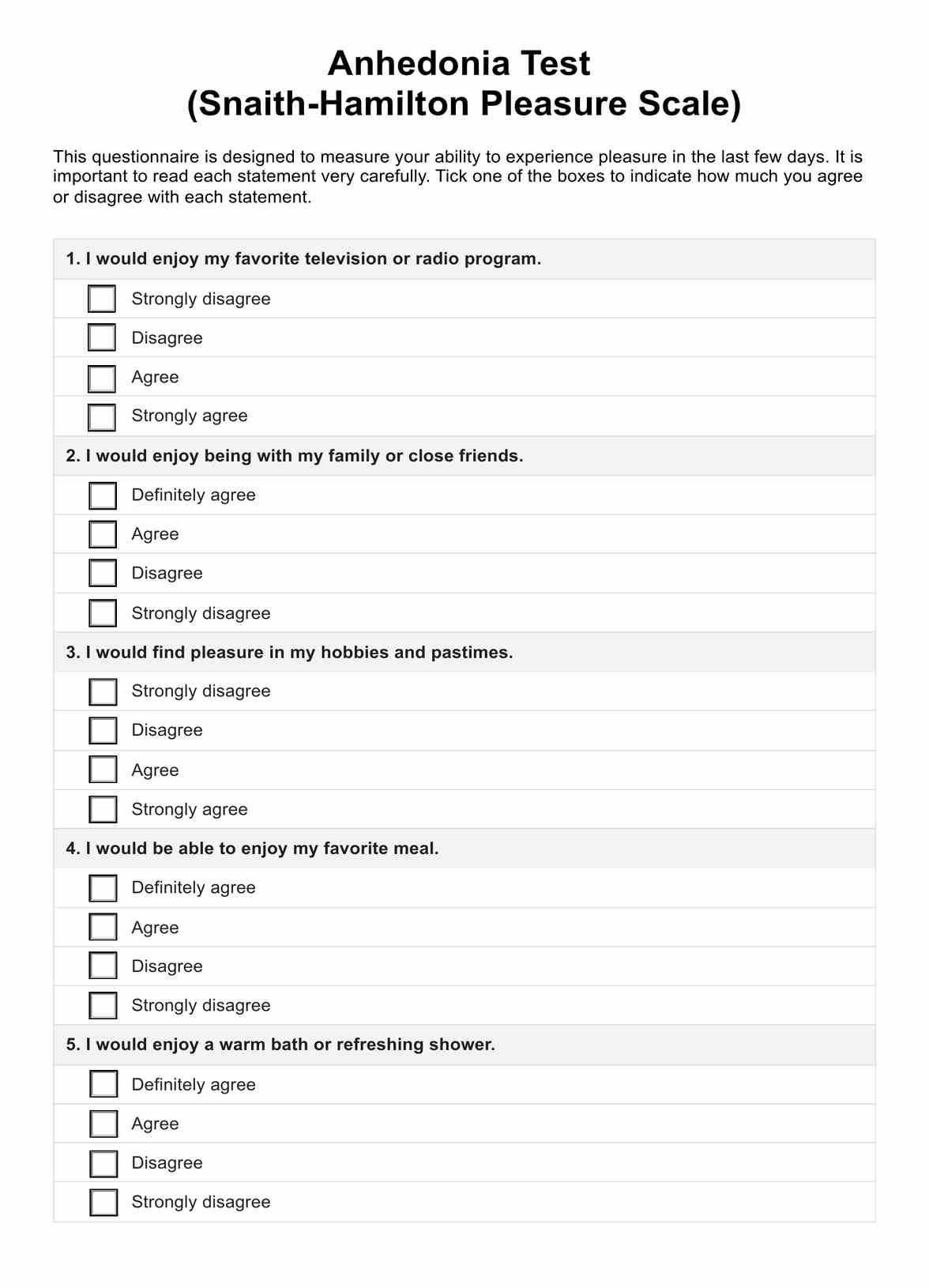Anhedonia duration varies; it can last weeks to months, depending on the underlying cause and treatment effectiveness.

Anhedonia Test
Learn about anhedonia, a symptom that affects pleasure and impacts patients' well-being. Explore diagnosis, treatment, and our free Anhedonia Test template.
Use Template
Anhedonia Test Template
Commonly asked questions
Anhedonia is tested using self-assessment questionnaires, like the sucrose preference test, and clinical interviews that evaluate either the desire or inability to experience pleasure.
Anhedonia, an impaired emotional response, can be triggered by depression, chronic stress, substance abuse, or neurological conditions.
EHR and practice management software
Get started for free
*No credit card required
Free
$0/usd
Unlimited clients
Telehealth
1GB of storage
Client portal text
Automated billing and online payments











